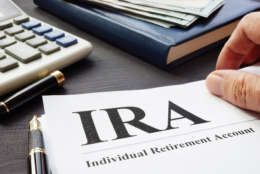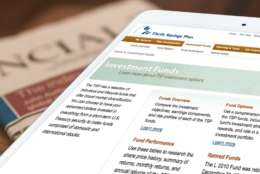FERS
-
To protect their annuities from the ups and downs of the stock market, many active and most retired federal-postal workers have a major chunk of their Thrift Savings Plan account in the Treasury securities G fund.
January 02, 2020 -
Timing federal retirement right allows you to carry over the maximum amount of annual leave, and in 2020 be paid for most if not all of it at the new higher 3.1% pay raise.
December 18, 2019 -
Most of the 5.8 million workers, retirees and former feds with Thrift Savings Plan accounts have some of their retirement nest eggs in the G fund.
October 29, 2019 -
Most experts would say it depends on your age, when you plan to retire, and, very important, your risk tolerance.
October 21, 2019 -
When it comes time to start withdrawing money from your TSP will you be glad you invested pre-tax, or wish somebody had talked to you about the Roth option?
October 15, 2019 -
Last month the Thrift Savings Plan implemented a series of changes in withdrawal rules it hopes/expects will lead to more people leaving their investments in the TSP when they leave government.
October 12, 2019 -
Federal workers and retirees are awash in numbers today, some solid, some still forming up. The final total will determine in large part what kind of financial future they have.
October 11, 2019 -
Fast approaching is the health benefits open enrollment period from Nov. 11-Dec. 9, when workers and retirees should shop carefully for the best deal for them and their families.
October 09, 2019 -
While people are fascinated by the TSP Millionaires Club, the real question is where does your account rank in value?
October 07, 2019 -
Bills, budgets and proposals to whack federal retirement benefits used to be the stuff of nightmares for both workers and retirees under FERS and CSRS.
September 17, 2019 -
The first TSP millionaires were all alike and today, they still have a lot in common. The vast majority have been investing the maximum for 29-plus years.
September 16, 2019 -
Earlier this year, the chances of both (or either) a federal pay raise and a separate cost of living adjustment for retirees were hovering somewhere between slim and slimmer. The president called for a zero…
September 13, 2019 -
Effective Sept. 15, major changes will take effect in the TSP, changes that will make it more attractive for life-time investors and more convenient for people who need to withdraw different amounts over their retirement.
September 10, 2019 -
Hundreds of federal and postal workers become retirement eligible every day. Although most don’t retire at the first opportunity.
September 09, 2019 -
The dominant Federal Employees Retirement System covers most working feds. It’s good but it has several moving parts.
September 04, 2019














